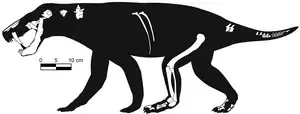(Press-News.org)
Researchers in Japan have demonstrated the high accuracy of their newly developed typhoon observation device, which is designed to drop from an aircraft into the eye of a typhoon. The results were published in the journal Scientific Online Letters on the Atmosphere (SOLA).
Dropped from aircraft, the dropsonde, a small, single-use instrument, measures and transmits atmospheric data, including temperature, humidity, and wind speed, as it falls. The new dropsonde, iMDS-17, weighs only 130 grams and is made mainly of a biodegradable material. With its fin and lightweight body, iMDS-17 can descend without a parachute, unlike conventional dropsondes.
To predict whether a typhoon will intensify and where it will move, it is important to know how temperature, wind, and humidity are changing. In Japan, airborne instruments called radiosondes are commonly used to observe the upper atmosphere. Radiosondes are launched from land using a rubber balloon. However, the strong winds and rain associated with typhoons, which form and develop over the ocean, make this process difficult.
To overcome this shortcoming, a research group at Nagoya University in collaboration with Meisei Electric Co. has developed Japan's first dropsonde that can be dropped from an airplane into the eye of a typhoon to obtain vertical profiles of temperature, humidity, and winds.
Designated Associate Professor Sachie Kanada and her colleagues at Nagoya University, in collaboration with researchers from Meisei Electric and the National Research Institute for Earth Science and Disaster Resilience, have conducted a study to evaluate the performance of their newly developed dropsonde. They evaluated the performance by comparing data from their dropsonde with data from an accuracy assured radiosonde used by the Japan Meteorological Agency.
Before that, dropsondes were rarely evaluated because their use was restricted to the ocean, making simultaneous comparisons with radiosondes impractical.
In their study, conducted on one of the islands of Okinawa in Japan, on March 27 and 28, the dropsonde and the reference radiosonde were launched simultaneously with the same balloon. A cutter with a timer was placed between the balloon and the two instruments. When the balloon reached an altitude of 12 km, the timer was activated, and both instruments were separated from the balloon and dropped. Each instrument measured the temperature, wind, and humidity as they descended, and the data from the dropsonde were compared with the data from the radiosonde.
Differences between the dropsonde and radiosonde data were less than 1 K and 2 m/sec. for temperature and wind, respectively, at most altitudes between 9 km and 2 km. The results showed a high performance of the dropsonde for temperature and wind observations. Humidity, however, tended to be drier than that of the radiosonde measurements and still needed improvement.
To observe the dropsonde in actual storm conditions, on October 9 and 10, 2024, Designated Associate Professor Kanada and Professor Kazuhisa Tsuboki of the Nagoya University Institute for Space and Earth Environmental Research dropped a total of 50 dropsondes from an aircraft into the eye of Typhoon Barijat.
Kanada explained: “On October 9, we had just arrived around the storm center in the typhoon genesis phase. The observed profiles of atmospheric conditions for the midlatitude typhoon were delivered worldwide via the Global Telecommunication System (GTS) of the WMO and used for the weather forecasting systems. This time, we preverified humidity data of the dropsondes and the data was improved. Using this dropsonde, we are planning to have another aircraft observation in 2025.”
END
The ICOD (Improving Condition in Down syndrome) project, a pioneering study in addressing the cognitive difficulties associated with Down syndrome, has demonstrated the safety of treatment with the molecule AEF0217, developed by the French biotech Aelis Farma, as well as its effectiveness in improving cognitive function in these people. The study was led by the Research Institute of the Hospital del Mar.
This phase of the trial (phase 1/2 of the project), funded by the European Union under the Horizon 2020 R+D programme and Aelis Farma, has been carried out with 29 people with Down syndrome between 18 and ...
Although demand for mental health treatment remains high, administrative and financial barriers are preventing many psychologists from participating in insurance networks, according to the American Psychological Association’s 2024 Practitioner Pulse Survey. Barriers by many insurance companies can make it more difficult for psychologists to remain in-network and for patients to access the care they need, exacerbating the ongoing mental health crisis.
This annual survey, which was conducted among 853 psychologists in September 2024, by APA and its companion organization APA Services ...
SAN BERNARDINO, California, USA, 17 December 2024 - In a compelling Genomic Press Interview, Editor-in-Chief Dr. Julio Licinio reveals how a children's book about a lonely color has shaped the innovative vision of scientific publisher Genomic Press. The story of Flicts, penned by renowned Brazilian artist Ziraldo Alves Pinto, has become more than just a brand element – it represents a revolutionary approach to academic publishing.
"Sometimes the ideas that don't fit anywhere else are precisely the ones that help us reach the stars," explains Dr. Licinio, highlighting the publisher's mission to support ...
CHARLESTON, South Carolina, USA, 17 December 2024 - In a comprehensive Genomic Press Interview published today in Brain Medicine, renowned neuroscientist Dr. Peter Kalivas reveals crucial insights into how brain circuits drive addictive behaviors and discusses potential new drug targets for treating behavioral disorders.
Dr. Kalivas, Distinguished University Professor at the Medical University of South Carolina, has transformed our understanding of addiction neuroscience through his pioneering work on the tetrapartite synapse - a complex cellular structure that includes neurons, astroglia, and the extracellular matrix. His ...
PHILADELPHIA, Pennsylvania, USA, 17 December 2024 - In a comprehensive Genomic Press Interview, Dr. Munir Gunes Kutlu, Assistant Professor at Temple University's Center for Substance Abuse Research, unveils revolutionary findings about how our brains process fundamental learning calculations and social interactions.
"Our research has identified specific neural mechanisms that transform sensory inputs into behavioral outputs," says Dr. Kutlu. "We've discovered that the brain's dopamine system works in more sophisticated ways than previously understood, particularly in how it processes information about environmental cues and rewards."
The interview, published ...
ATLANTA, Georgia, USA, 17 December 2024 - In a comprehensive Genomic Press Interview with researchers from Emory University, a new study published today reveals complex attitudes toward psychedelic therapy, with detailed statistics showing both strong support for potential benefits and significant awareness of risks.
The research, published in the journal Psychedelics, surveyed 178 attendees at an academic conference focused on psychedelics and spiritual care. Among participants, 32 were active psychedelic ...
Leuven, Belgium, 17 December 2024 – Researchers at Neuro-Electronics Research Flanders (NERF), led by Prof. Vincent Bonin, have published two new studies uncovering how visual information is processed and distributed in the brain. The studies reveal the complexity and flexibility of visual information processing in the brain.
The visual cortex, a key region for interpreting and processing visual input, plays a crucial role in shaping what we see. Vincent Bonin, a professor at KU Leuven and group leader at NERF, studies the neural circuits that process sensory information. "We often think of visual processing ...
Nearly a quarter of Portuguese adults have allergies that cause a runny nose. This respiratory disease, formally called allergic rhinitis and frequently associated with asthma, is a common problem around the world, and the upper airway is a key target for research into the underlying disease processes. Now a global team of researchers has discovered that patients with allergy-induced sniffles and asthma have different fungal colonies or mycobiomes in their noses, suggesting potential lines of enquiry for future treatments.
“We showed that allergic rhinitis ...
A new psychological study has shown that when people know they are under surveillance it generates an automatic response of heightened awareness of being watched, with implications for public mental health.
In a paper published in the journal Neuroscience of Consciousness psychology researchers from the University of Technology Sydney (UTS) worked with 54 participants to examine the effects of surveillance on an essential function of human sensory perception – the ability to detect another person’s gaze.
Lead author, Associate Professor of neuroscience and behaviour Kiley Seymour, said previous research has established the effects on conscious behaviour when people know they ...
DECEMBER 2024 TIP SHEET: A behavioral expert offers advice for dealing with loss and holiday grief, a physician-scientist explains using “biological age” as a tool to predict early colorectal cancer risk, a cancer leader receives a prestigious award for mentorship, blood cancer experts share research insights that may eventually lead to a cure for multiple myeloma, a recent study shows genetic mutations accumulate in smokers with MDS, two clinical trials show promise for using an antibody to treat high-risk forms of lymphoma and ongoing research seeks answers for higher breast cancer ...






